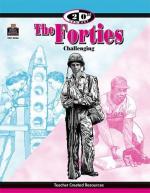|
This section contains 652 words (approx. 3 pages at 300 words per page) |

|
The Big Bang Theory.
During the first decades of the twentieth century cosmologists, physicists, and astronomers proposed various theories about the formation of the universe, debating whether the universe was static or dynamic and expanding. In the 1940s astronomer George Gamow and his colleagues at George Washington University proposed a model of the universe developed from Albert Einstein's 1916 theory of relativity and Edwin Hubble's first measurements of distances in galaxies in 1929. Gamow's Big Bang theory hypothesizes that the universe began with the explosion of primeval matter in a state of extreme heat and high density, beginning the ongoing dynamic expansion of the universe. Gamow theorized that primordial matter consisted of neutrons and their decay products — protons and electrons mixed together — in a sea of high-energy radiation. This matter provided the basic ingredients for the formation of heavier and heavier elements as the universe continued to...
|
This section contains 652 words (approx. 3 pages at 300 words per page) |

|




